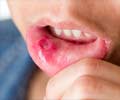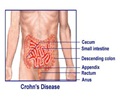Mesalamine(Mesalazine) Medication Information
Learn everything you need to know about Mesalamine(Mesalazine)-pronunciation, uses, dosage guidelines, indications, and when to take or avoid it.
Get up-to-date information on side effects, precautions, warnings, and proper storage to ensure safe usage.
Explore Mesalamine(Mesalazine) brand names commonly used in India and internationally, along with detailed pricing information. Consult your healthcare provider for tailored medical advice.
Generic Name : Mesalamine(Mesalazine) Pronunciation : me-SAL-a-meen ICD Code : Y53.9 Therapeutic Classification : Anorectal PreparationsBrand Names or Trade Names of Mesalamine(Mesalazine)
India :
International :
Asacol, Canasa, Pentasa, Rowasa.
Why is Mesalamine(Mesalazine) Prescribed? (Indications)
This medication is an anti-inflammatory agent, prescribed for the induction of remission and for the treatment of patients with mild to moderate ulcerative colitis (inflammation of the colon).When should Mesalamine(Mesalazine) not be taken? (Contraindications)
Contraindicated in children less than 2 years old, and known hypersensitivity.What is the dosage of Mesalamine(Mesalazine)?
Rectal suppository- The usual dose is 1000 mg, 1 time daily at bedtime.Oral dose usually varies from 2.4 go 4.8 g/day for acute attack.
It may also be administered by enema in a dose of up to 4 g/day.
How should Mesalamine(Mesalazine) be taken?
It comes a tablet (3times/day) and capsule (4times/day) to take by mouth and as a suppository (1to 3times/day) and an enema (1time/day) to use in the rectum. It should be taken with food.What are the warnings and precautions for Mesalamine(Mesalazine)?
•Mild to moderate impaired kidney or liver function (test serum creatinine before treatment, every 3 months for 1st year, every 6 months for next 4 years, then annually).Caution needed for patients with history of elderly, active peptic ulcer, pregnancy, lactation, patients predisposed to inflammation of pericardium or heart muscle.
Counsel patients to report any unexplained bleeding, bruising, discoloration of the skin, sore throat, fever or malaise during treatment, perform blood count and stop treatment if blood plasma cancer suspected.
Counsel patients taking delayed release tablets to report repeatedly unbroken or partially broken tablets in their feces. Narrowing of part of the stomach may delay release into colon.
What are the side effects of Mesalamine(Mesalazine)?
Heart- Dilatation of blood vessel, inflammation of heart muscle or pericardium(the covering of the heart), abnormal accumulation of fluid in the pericardial cavity.Central Nervous System- Headache, dizziness, weakness, Increased tightness of muscle, fatigue, general discomfort, tiredness, anxiety, migraine, nervousness, tingling, sleeplessness, confusion, depression, emotionallability, peripheral nerve disease, drowsiness, tremor.
Skin- Rash, itching, sweating, hair loss, acne, dry skin, skin inflammation that results in reddish, painful, tender lumps, psoriasis, deep ulceration, hives.
Eye and ENT- Inflammation pharynx, stuffy nose, perception of sound within the human ear in the absence of corresponding external sound, type of dizziness, ear disorder, ear pain, sinusitis, visual abnormalities, inflammation of conjunctiva, sore throat, blurred vision, eye pain, taste perversion.
Gastrointestinal- Abdominal pain, eructation, nausea, abdominal cramps/discomfort, diarrhea, upset stomach, flatulence, constipation, vomiting, ulcerative colitis, gastroenteritis, GI bleeding, rectal disorder, stool abnormalities, bloating, rectal pain, loss of appetite, hemorrhoids, blood in stool, gallstones, dry mouth, increased appetite, oral ulcers, perforated peptic ulcer.
Genitourinary- Painful menstruation, urinary tract infection, decreased CrCl, blood in urine, urinary frequency, absence of urine, inflammation of the epididymis, irregular periods, minimal change kidney disease, kidney failure, reversible low sperm, urinary urgency.
Blood- Decrease in red blood cells, white blood cells, platelets. Increase in eosinophils, disease of the lymph nodes.
Liver- Obstruction of bile flow or secretion, increased transaminases, liver damage (including liver necrosis and liver failure), hepatotoxicity (including cholestatic jaundice, hepatitis, and jaundice).
Local- Pain on insertion of enema tip, rectal pain with suppositories.
Metabolic- Peripheral edema, facial edema.
Musculoskeletal- Back pain, joint pain, muscle pain, joint disorder, inflammation of joints, gout, neck pain.
Respiratory- Difficulty in breathing, inflammation of bronchus, cold, increased cough, sore throat, eosinophil accumulates in the lung, exacerbated asthma, scaring of lungs, inflammation of pleura.
Miscellaneous- Pain, fever, flu syndrome, chest pain, chills, infection, itching, rapid swelling of dermis, drug fever, Kawasaki-like syndrome, lupus-like syndrome, autoimmune disease.








